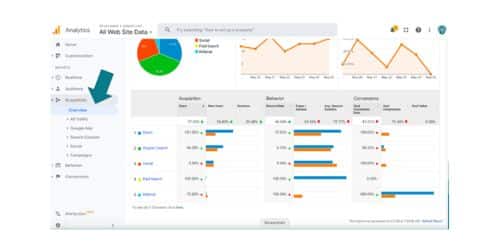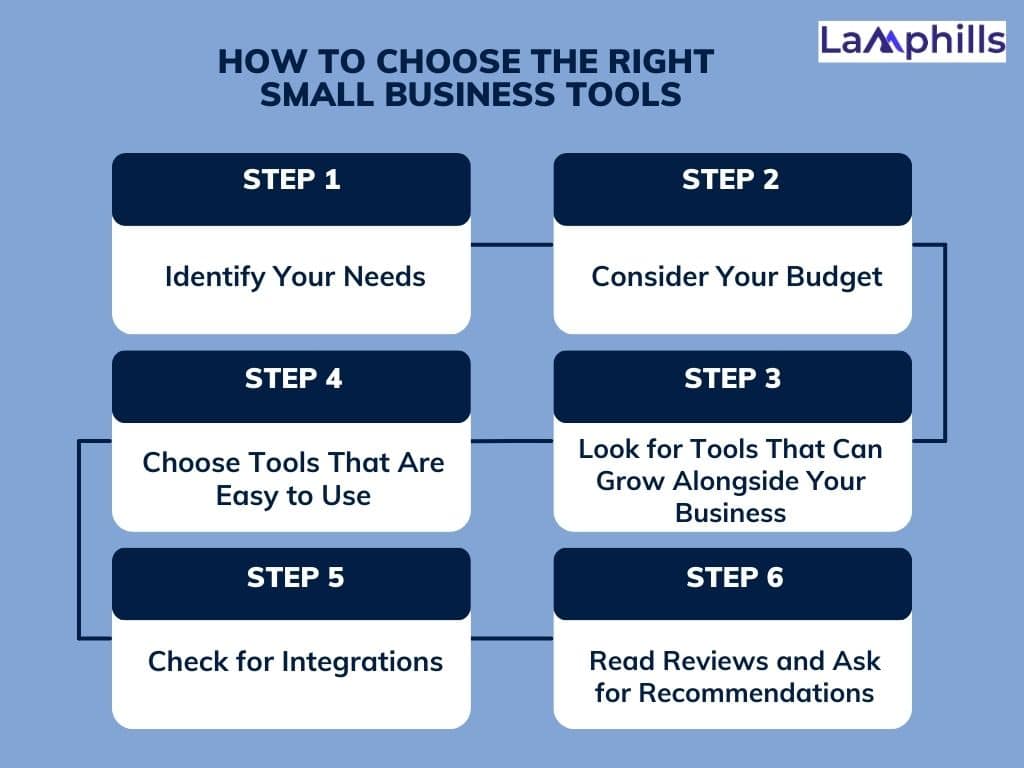Running a small business involves a lot more work than most people realize. You need all the support you can find. Luckily, there are many tools available that can make your job easier and help you run things more smoothly.
You have to handle daily tasks like managing projects, scheduling meetings, and making sure your team stays on track. On top of that, there’s keeping an eye on your marketing campaigns, making sure your website works well, and managing customer relationships.
And that’s just the beginning; your to-do list is already pretty long! That’s where small business tools come in.
In this article, we’ll show you some of the best tools for managing different parts of your business and making things easier for you.
First, let’s get to learn what small business tools are.
Key Points
- Small business tools are software programs that help with tasks like project management, scheduling, marketing, and finances, making work smoother and more efficient.
- These tools save time by automating tasks, improving teamwork, and providing helpful data to make better decisions, which helps businesses stay organized and grow.
- Some essential tools include Trello for organizing tasks, QuickBooks for managing finances, and Google Analytics for tracking website performance.
- To choose the Right Tools, focus on tools that fit your business needs, are easy to use, and offer features to help you grow.
- Using the right combination of tools helps reduce stress, improves productivity, and allows you to focus on what’s most important.
What are Small Business Tools?
Small business tools are software programs that help you run your business, work more efficiently, and grow. These tools can do many things, such as helping with communication within your team, tracking tasks, handling bookkeeping, and organizing files.
In short, any software that your small business uses regularly is considered a “small business tool.”
A report shows that 95% of small businesses use at least one platform, and 87% believe that using these tools has made running their business easier.
Here are some types of business tools you can use for your daily tasks:
- Project management tools
- Organization and scheduling tools
- Communication and teamwork tools
- Marketing tools
- Accounting and financial tools
- Customer relationship management (CRM) tools
- Automation tools
Benefits of Small Business Tools
Running a small business comes with many challenges, especially when you’re working with limited resources. Luckily, cloud-based tools can help you solve or reduce many of these problems.
Here are a few reasons why you should think about using small business tools:
- Automating routine tasks and making your work process smoother can save you a lot of time so you can focus on the bigger picture of growing your business. This also makes your business more productive.
- Collaboration tools, such as chat and video conferencing with instant messaging and file sharing, make it easier for your team to communicate and collaborate.
- You can make smarter, data-driven decisions for your business with detailed reports and analytics.
- Productivity tools help you manage tasks, track progress, and make sure your resources are being used well, leading to better organization within your business.
Now, let’s take a look at this collection of top small business tools that can help you manage every part of your business and build the perfect set of apps.
Top 15 Tools for Small Businesses
Running a small business can feel like a juggling act. At one point in my career, I was managing everything by hand, bookkeeping in Excel, customer communication through email, and scheduling on sticky notes. It wasn’t long before I realized that while my passion and vision for the business were there, my tools weren’t keeping up.
The moment I switched to more efficient tools, it felt like a weight had been lifted off my shoulders. If you’ve ever felt like your business could run smoother, here’s a list of 15 useful tools to help you manage different parts of your business, like scheduling, project management, marketing, accounting, and more.
#1. Trello – Organize Your Workflow

Image by PCMag
I used to keep mental checklists for the tasks I needed to complete. But as my business grew, so did the list, and things started slipping through the cracks. That’s when I discovered Trello. It’s like having a digital bulletin board where I can break down projects into manageable tasks.
I can assign deadlines, track progress, and even collaborate with team members. Seeing everything laid out visually made me feel more in control of my workload.
Trello is a popular project management tool known for being easy to use and having a simple interface with Kanban boards. It works well for smaller projects and includes features like:
- Different ways to view projects, such as boards, lists, and cards
- The ability to create tasks with due dates, attachments, checklists, and custom fields
- No-code automation with a tool called Butler
- Integrations with popular third-party software
However, Trello lacks some advanced features. If you need more, you might want to consider using Motion, which offers project management along with planning and scheduling tools, giving you an all-in-one productivity solution.
#2. QuickBooks – Best for Accounting
When I first started managing my money, I used a simple spreadsheet. But after a really confusing tax season, I knew I needed something more organized. That’s when I found QuickBooks, and it was a game changer. It made keeping track of my finances easy by automatically recording expenses and income, and I could create invoices in just a few clicks.
I also synced my business bank account to get up-to-date reports. If you’re feeling overwhelmed by financial paperwork, QuickBooks is like a lifeboat.
Managing finances is a critical but tough part of running a business, and the need for good accounting tools is growing fast.
QuickBooks is a cloud-based accounting tool designed for small and medium-sized businesses. It helps you stay on top of your finances with features like:
- Tracking all your expenses and income in one place
- Organizing expenses into tax categories
- Built-in invoicing system
- Inventory management
- Custom financial reports and profit and loss statements
#3. Motion – Best for Planning and Scheduling
Motion is an AI-powered productivity tool that helps you plan and organize your day.
It acts like an AI assistant, taking care of all your scheduling and automatically planning your tasks.
Here’s what Motion offers:
- A task management tool that lets you create tasks with one click, set specific time slots for tasks and create recurring tasks.
- A project management tool with templates, extra details like labels and notes, and automated scheduling for everyone on your team.
- An AI Meeting Assistant with a custom booking page, daily meeting limits, and reusable templates for scheduling regular meetings.
- An intelligent calendar that automatically blocks time for tasks and shows both your personal and work calendars in one view.
- Integration with popular apps like Google Calendar, Google Meet, Gmail, Microsoft Teams, iCloud Calendar, and Zapier.
#4. Google Analytics – Track Your Website’s Performance

Image by Jess
To understand what’s working on your website and what’s not, you need web analytics tools that can collect and analyze data about your site and your visitors.
That’s why the web analytics market is expected to grow to $15.73 billion by 2029.
Google Analytics, a free web analytics tool, is one of the top options. It offers features like:
- Real-time reports on things like user engagement, traffic sources, and revenue.
- Insights into the performance of Google Ads campaigns, with different ways to track marketing success.
- Custom data analysis options.
- Built-in automation that provides predictions and data-driven insights to help you make better decisions.
- Integration with other Google tools like Google Ads and Google Search Console.
#5. Mailchimp – Email Marketing Made Simple
At first, I avoided email marketing because I thought it would be too hard. But I soon realized it’s one of the best ways to connect with customers. Mailchimp made it simple to create professional emails, manage my subscribers, and even see how well each email campaign did.
Email is still the top way for brands and customers to communicate, with 79% of US consumers preferring it. So, email campaigns should be a key part of your digital marketing plan.
Instead of handling email marketing by yourself, you can automate it with Mailchimp.
Here’s what Mailchimp offers:
- A collection of easy-to-use, drag-and-drop email templates that you can customize.
- Email automation using the Customer Journey Builder tool.
- AI-generated emails through Intuit Assist.
- A/B and multivariate testing to compare different subject lines, email content, and send times.
- Analytics and reports to help you track how well your campaigns are doing.
#6. Canva – Best for creating digital assets

Image by Canva
For a long time, I depended on expensive designers to make graphics for my website and social media. But when I discovered Canva, everything changed. I was able to create professional-looking designs without knowing anything about graphic design.
Whether it was social media posts, business cards, or brochures, Canva made it easy for me to create great-looking designs quickly and at a low cost.
You might not have a graphic designer on your team, but that doesn’t mean you can’t create professional-looking visuals and digital marketing materials — including social media posts, infographics, business cards, and newsletters.
Canva — a digital tool for content creation with a user-friendly interface and thousands of templates — is perfect if you have limited experience in graphic design.
Its range of features includes:
- Real-time collaboration in Whiteboards and Canva Docs, with the option to work on designs simultaneously and leave comments
- Brand Kit, a place to store brand assets — fonts, icons, logos, and color palettes — for future use
- OpenAI-powered text generation with Magic Write
#7. WordPress – Best for Building Websites
If you haven’t started creating your online presence yet, WordPress is a great option. It’s one of the most popular Content Management Systems (CMS) available.
WordPress is easy to use, even if you’re not tech-savvy, and it has a huge online community with lots of helpful resources to guide you.
But just because it’s easy to use doesn’t mean it lacks advanced features:
WordPress offers a wide range of free and paid themes, templates, and thousands of plugins, everything you need to build your first website.
#8. Google Drive – Best for File Management
File management and sharing tools are essential for any small business because they help teams work together and keep important documents easy to access.
We recommend Google Drive because it offers a free version with 15GB of storage. This cloud-based tool, part of Google Workspace, supports over 100 file types, including images, videos, audio, PDFs, and CAD files. It also works seamlessly with Google Docs, Slides, and Sheets.
If 15GB isn’t enough, you can upgrade to the Business Standard plan, which gives each user 2TB of storage.
#9. Zapier – Best for Automation
Zapier is a no-code platform that helps you automate tasks by connecting over 6,000 different apps. Whatever tools your team uses, you can probably link them through Zapier and automate parts of your workflow.
Keep in mind, Zapier is only as helpful as the apps you’re already using. Here’s a tip to get the most out of it:
You can use Zapier to connect Motion with other apps on this list. Just pick a trigger and an action, and let Zapier automate your tasks to boost your productivity.
#10. Zoom – Best for Video Conferencing

Image by Zoom
Zoom became hugely popular during the COVID-19 pandemic and is now the top video conferencing tool with 57.24% market share.
Here’s why Zoom is a favorite for online meetings:
- Up to 30 hours of meeting time with as many as 1,000 participants (depending on your plan)
- Option to record meetings and save them on your device or in Zoom Cloud
- AI-generated meeting summaries and highlights
- Whiteboards, co-annotation, and in-meeting polls
- One-on-one and group chat features
- Ability to live-stream meetings on Facebook, YouTube, and other platforms.
During the pandemic, I needed a way to meet with clients online. That’s when I started using Zoom. It’s simple, dependable, and has a good free plan. I’ve used it for client meetings and webinars, and it really helped me switch to doing business digitally more easily.
#11. HubSpot CRM – Best for Customer Relationship Management
Managing customer relationships involves more than just providing support. As your business grows, you’ll need a central place to organize customer data and track interactions across different channels.
That’s where HubSpot CRM comes in. It helps business owners manage sales, contacts, and outreach activities. Key features include:
- Contact management tools that remove the need for manual data entry
- Lead management and prospecting software
- Document tracking, allowing you to create a shared library of sales content
- Built-in reporting with options for custom dashboards.
#12. Slack – Best for Internal Communication**
While email is useful, it doesn’t provide the quick communication needed for teams. For instant messaging, Slack is one of the best tools available.
Here are some of Slack’s main features:
- One-on-one and team chat
- Public and private channels to keep conversations organized
- Slack’s Huddles for real-time collaboration, offering audio/video calls, screen sharing, messaging, and reactions
- Canvases to organize and share information, including files, images, and videos
- Audio and video clips for quick updates
#13. Zendesk – Best for Customer Support
You’ve probably heard that keeping customers happy is key to success. That’s why the demand for customer service software is growing fast.
Zendesk is an all-in-one customer service tool that helps you provide great customer experiences and build strong relationships. Here are some of its main features:
- A central workspace for all customer interactions
- An integrated ticketing system to manage support requests
- AI agents that offer 24/7 customer support
- A built-in voice solution for phone support
- Help center software to organize and manage your knowledge base
#14. LastPass – Best for Password Management
Password management tools are often overlooked, but they’re just as important for your team as any other business software.
As your business grows, you’ll have more accounts to manage. With multiple logins for email, websites, and social media, you’ll need a secure way to store them while keeping them easy to access.
LastPass is like a secure vault that only you can open with your Master Password. It also offers:
- A built-in password generator
- Autofill to speed up logging in
- Secure password sharing
- The ability to create one-time passwords (OTPs)
- Multi-factor authentication (MFA) for extra security.
#15. Evernote – Best for Note-Taking
You could write notes and make to-do lists the old-fashioned way, but it can be hard to keep them organized and easy to find.
That’s where tools like Evernote help. With Evernote, you can:
- Use the “Web Clipper” to capture and edit screenshots of web pages, documents, and articles.
- Create to-do lists with extra notes, reminders, and due dates.
- Connect Evernote with Google Calendar to see your notes and schedule in one place.
- Make shared notebooks and edit notes together with your team.
- Search your notes by title, tag, date, or keyword.
How to Choose the Right Small Business Tools to Streamline Your Operations

Running a small business means you have to handle many different tasks, from managing your finances to staying connected with customers. Using the right tools can make these tasks easier and help your business run smoothly. But with so many tools available, how do you choose the right ones?
Here’s a simple guide to help you pick the best tools for your business:
#1. Identify Your Needs
Before choosing any tools, think about what your business actually needs. Ask yourself:
- What tasks take up the most time?
- Where do you feel disorganized?
- What parts of your business need to be improved?
For example, if you struggle with managing projects or deadlines, you might need a tool like Trello or Asana. If you have trouble keeping track of customer details, a CRM tool like HubSpot could be helpful.
#2. Consider Your Budget
As a small business owner, you probably want to save money where you can. Many tools offer free versions with limited features, and this can be a good place to start. Some examples include:
- Mailchimp for basic email marketing
- Canva for simple designs
As your business grows, you can always upgrade to paid versions with more features. Make sure the tool fits within your budget and provides good value for what you need.
#3. Choose Tools That Are Easy to Use
It’s important to pick tools that are simple and easy to understand. You don’t want to spend hours learning how to use complicated software. Look for tools with a clean design and user-friendly interface. Many tools offer free trials or demos, so take advantage of these to see if the tool is right for you before committing.
#4. Look for Tools That Can Grow Alongside Your Business
As your business expands, your needs will change. Choose tools that offer more features as you grow. For example, starting with a free version of QuickBooks for finances or Zoom for virtual meetings is great for a small team. Still, as you add more people, these tools offer paid upgrades with extra features like detailed financial reports or bigger team meetings.
#5. Check for Integrations
Some tools work better when they can connect with other software you’re already using. For example, Slack can integrate with Google Workspace, so you can share files directly within the chat. This saves time and keeps everything in one place. Before choosing a tool, see if it can “talk” to the other tools you’re using to avoid unnecessary work.
#6. Read Reviews and Ask for Recommendations
Sometimes, the best way to find the right tool is by hearing from others who have used it. Look for reviews online or ask other business owners what tools they recommend. This can save you from making the wrong choice and help you find tools that are tried and tested.
Choosing the right tools for your small business can make your work easier and help your business grow. But with so many options out there, it’s hard to know where to start. That’s why we’ve put together this simple checklist to guide you step-by-step in picking the best tools for your needs, budget, and business goals.
By following this checklist, you’ll find tools that save time, improve organization, and help your business run smoothly.
Wrap Up
Each of these tools has proven to be a lifesaver to me and many small business owners around the world. Whether it’s managing finances, organizing tasks, or creating professional-looking content, these tools have helped me stay on top of my game and run my business smoothly. I hope you find them as helpful as I did.
Remember, using the right tools doesn’t just make things easier. It helps you focus on what you do best: growing your business. When choosing a tool, focus on tools that are easy to use, can grow with you, and help you save time. Once you find the right ones, these tools can take a lot of the stress out of running your business, allowing you to focus on what really matters: growing and serving your customers.
Frequently Asked Questions.
What are the most useful business tools?
Microsoft Teams – Best for working together as a team.
– Slack – Best for team communication.
– Zoom – Best for video meetings.
– ProofHub – Best for managing projects and team collaboration.
– Trello – Best for organizing tasks with Kanban boards.
– Asana – Best for managing tasks across different teams.
– QuickBooks – Best for managing finances and bookkeeping.
What is the Most Powerful Marketing Tool?
Here are the best marketing tools for your business:
- Search Engine Optimization (SEO):** Helps your website show up in search results.
- Lead Generation: Find potential customers for your business.
- Video Marketing: Uses videos to attract and engage customers.
- Email Marketing: Sends messages directly to your audience’s inbox.
- Media Monitoring Tools: Tracks mentions of your brand online.
- Customer Loyalty Programs: Rewards customers to keep them coming back.
- PPC (Pay-Per-Click): You pay for ads when someone clicks on them.
- Content Marketing: Creates useful content to attract customers.
How to Create a Unique Business Name
The Perfect Checklist for Coming Up With a Business Name:
- Write Your Story: Think about why you started your business and what makes it special.
- Take a Personal Inventory: Consider your strengths, passions, and values to find inspiration.
- Look at Other Business Names in Your Industry: See what names others in your field are using for ideas.
- Check Out Business Names in Different Industries: Get creative by exploring names outside of your industry too.
- Do an Emotional Brainstorm: Think about the feelings you want your brand to evoke.
- Check the Thesaurus: Use it to find different words and synonyms that might fit your business.
- Explore Mythology, Movies, & Legends: Look for inspiration in old stories, movies, or legends.
- Use a Business Name Generator: Try online tools that can help you generate name ideas.
What are the three types of business tools?
Business tools can be grouped into three main types based on their function:
1. Tools that help with entering and checking data in any department.
2. Tools that help manage and improve how a business runs.
3. Tools that bring data together and assist in making decisions.
What is a sales tool?
A sales tool is a general term for different types of technologies that help with sales. This includes tools for managing customer relationships (CRM), finding and understanding potential customers (sales intelligence and prospecting), speeding up the sales process (sales acceleration), and connecting different data systems.
Who is the king of marketing?
The consumer.
In today’s marketing, the main goal of a seller is to understand and meet the needs of the consumer. That’s why the customer is seen as the “king.”
Similar Articles
Best AI Tools For Business in 2024 For Productivity
15 Best Inbound Marketing Tools That Can Save Your Business in 2024
ROI Tracking Made Simple: Tools and Strategies for Modern Business






